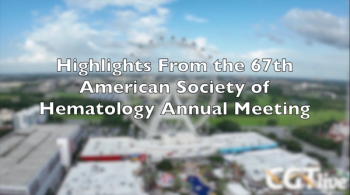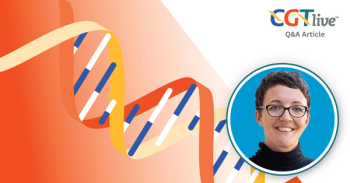
Gene therapy for wet AMD shows promising long-term results
Three-year follow-up from the phase I/IIa trial of rAAV.sFlt-1 subretinal injection is encouraging for gene therapy for exudative age-related macular degeneration.
Take-home message: Three-year follow-up from the phase I/IIa trial of rAAV.sFlt-1 subretinal injection is encouraging for gene therapy for exudative age-related macular degeneration.
Perth, Australia-A single injection of a gene therapy construct rAAV.sFLlt-1 for advanced age-related macular degeneration (AMD) has shown safety and efficacy through 3 years in a small cohort, said Ian J. Constable, MBBS.
The investigator-initiated study (supported by Avalanche Biotechnologies) has 3-year data from a phase I/IIa study on AVA-101 (also known as sFlt-1). Prof. Constable noted the idea was that this single injection might be able to continuously secrete a therapeutic protein over an extended period to avoid the need for frequent injections in the neovascular AMD patient.
“All patients were recruited with wet macula and had [undergone] anti-vascular endothelial growth factor therapy beforehand,” said Prof. Constable, professor of ophthalmology, Centre for Ophthalmology and Visual Science (incorporating Lions Eye Institute), The University of Western Australia, Perth. “When they were recruited, they all had ranibizumab at day 0 and day 28.”
The gene construct injection was done at day 7 coupled with vitrectomy. Patients were randomly assigned (3:1) to receive either 1â×â1010 vector genomes (vg; low-dose rAAV.sFLT-1 group) or 1â×â1011 vg (high-dose rAAV.sFLT-1 group), or no gene-therapy treatment (control group). All subjects had monthly assessments and received ranibizumab rescue injections as mandated by optical coherence swirling, loss of corrected vision, or fluorescein angiography.
Results published in 2015 on the first eight treated subjects “showed that at 1 year in the pilot study there was no loss of vision and there were minimal or no rescues required. Likewise, the center point thickness which was reduced with the booster doses at the beginning was largely maintained, although the retinal thickness was still above normal in some of the cases,” Prof. Constable said.
Safety study details
Long-term safety assessments were done at months 18 and 36 (adverse event recording occurred throughout the study). The median age of the patients at baseline was 78 years (with a range of 71 to 86 years), and a median ETDRS best-corrected visual acuity (BCVA) of 36.5 letters (range, 28 to 56). The median center point thickness was 549 μm.
None of the eight enrolled patients were treatment-naïve, and the number of previous anti-vascular endothelial growth factor doses ranged from 1 to 29, with a mean of 11.5. A post-hoc analysis of the images indicated established sequelae-seven patients (88%) had subretinal fibrosis, and five (63%) had pigment epithelial detachment.
Six patients had long-term data at 18 months, and four have 36-month data (two patients dropped out at months 18 and 21 due to advancing Alzheimer’s disease). Although there were ocular adverse events, they occurred early and did not affect vision, Prof. Constable said.
“There were no treatment-related ocular adverse events observed between the 12- and 36-month period,” he said. “Likewise, we encountered no systemic adverse events attributable to the gene therapy up to the 36-month exit point.”
Vector shedding was seen early (day 3) in two patients, but was absent at Day 21 and beyond. No associated virus antibodies were found at baseline in one of the two, and rose in the other, but were not associated with the number of rescue injections.
“Visual acuity was maintained,” he said. “During the period up to 18 months, there was a modest decrease in visual acuity in 3 out of 4 patients who were followed out to 36 months. The center point thickness was reduced by a mean of 186 μm at 12 months and 179 μm in the 4 remaining patients at 36 months.”
At both 12 and 18 months, there were very few rescue treatments in the high-dose group, but one patient in the low-dose group underwent an additional four rescue injections in year 3.
“Overall for the low dose, the mean number of rescues was 3.3 in the 3 years and the mean number for the high-dose gene therapy was 0.67,” Prof. Constable said.
Although this initial study involved a very small number of patients, the results “do suggest the high-dose group needed less rescue therapy than the lower-dose group; we need the 3-year data from our extra 32 patients currently enrolled in the phase IIa study to confirm our findings.”
Other considerations
There is “good laboratory evidence” that peeling the internal limiting membrane (ILM) increases the transfer across the retina, but “there are new subtypes of AAV that seem to penetrate the ILM and get through better and it may be that one can still do it just with an injection and without the vitrectomy or peeling the ILM or indeed injecting under the retina with some of the new subtypes,” Prof. Constable said. “We simply don’t know.”
However, in this study all enrolled patients had posterior vitreous detachment to meet the safety requirements.
Prof. Constable added choroidal atrophy is an area the researchers will continue to monitor with the enlarged 40 patient cohort. Because of their advanced disease, some patients already had geographic atrophy and some in whom the geographic atrophy increased slightly.
“Our overall impression is that per-protocol dictates an injection away from the macula, so maybe we’re undertreating these patients,” he said. “We’ve certainly seen no patient lose vision from geographic atrophy.”
Ongoing debate remains regarding the best place to inject-off-center eliminates the potential for disrupting the fibrotic macula, and the literature is beginning to show damage is limited by detaching the macula with a subretinal injection, Prof. Constable said.
“It may be that we will have to transfect a larger area; this is but one of the factors stopping us from moving directly onto a phase IIb study,” he said.
Instead, the group will be re-evaluating where to inject in a primate experiment.
Ian J. Constable, MBBS
This article was adapted from Prof. Constable’s presentation at the 2015 meeting of the American Academy of Ophthalmology. Prof. Constable has financial interests with Avalanche Biotechnologies and National Health and Medical Research Council of Australia.
Newsletter
Stay at the forefront of cutting-edge science with CGT—your direct line to expert insights, breakthrough data, and real-time coverage of the latest advancements in cell and gene therapy.































